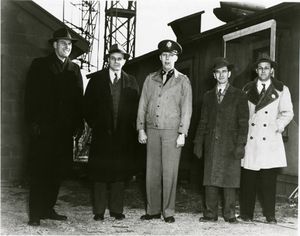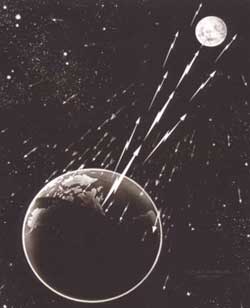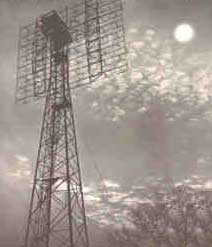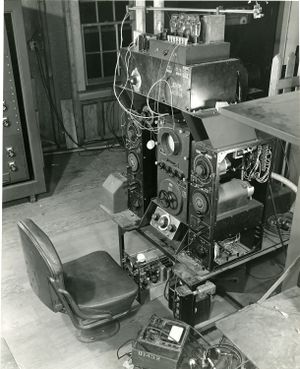Project Diana

Just after the end of World War II, United States military leaders asked the U.S Army Signal Corps to research the capabilities of long-range radar. The military wanted to learn whether long-range radar could be used to detect incoming ballistic missiles. Military planners were well aware of the damage the dreaded German V-1 and V-2 rockets had done to London during World War II and sought a way of preventing such destruction in the future. This was especially important since the military believed the former Soviet Union, an enemy of the U.S, would soon have long-range missiles and, possibly, nuclear weapons. The result was Project Diana, mankind’s first attempts at reaching beyond the ionosphere and the United State’s first foray into space.
The job was handed over to Colonel John DeWitt and his colleagues at the Evans Signal laboratory in Belmar, New Jersey. DeWitt was charged with the task of determining whether radar waves could penetrate the ionosphere. This was a crucial factor, because long-range missiles would arc into the ionosphere as they traveled toward their target. The best way to find out would be to bounce a signal off an object outside the earth’s ionosphere strong enough to return a signal back through it to the earth again. DeWitt, who had an interest in astronomy, chose the moon as the first distant target, and gave the program the name, Project Diana after the Greek goddess of the moon.
The scope of Project Diana and the distance of the moon required major modifications to existing radar technology. The radars used in World War II had been used for relatively short-distance detection of enemy aircraft. These radar sets emitted short bursts of microwave energy that lasted only a few millionths of a second, and could detect objects as far away as several hundred kilometers (160 kilometers is about 100 miles). But the moon is about 383,000 kilometers (about 238,000 miles) from the earth. Not only would the “echo” of a radar pulse sent to the moon take much longer to return, but it would be much weaker than the typical echoes detected by military radars up to that time.
To address these challenges, DeWitt and his colleagues decided to generate a much longer radar pulse that lasted about a quarter of a second. This pulse was easier to detect than a shorter one. One of the few existing high-power radar sets capable of generating such a long pulse had been designed by Major Edwin H. Armstrong, a well-known radio researcher and developer of FM broadcasting. In fact, the radar frequency at which this set operated—111 MHz—was slightly higher than today’s FM broadcasting band in the U. S. (88-108 MHz). The researchers decided to use this set as the starting point for their project.
The first tests in December 1945 resulted in frustrating setbacks when vacuum tubes burned out, oscillator circuits refused to oscillate, and other equipment failed to work, or needed further modification. The equipment required a considerable redesign.
One of the most visible parts of the new system was its antenna. To receive as much of the feeble echo as possible, the antenna was constructed from four standard radar antennas. Although it could change its azimuth (that is, it could move from side to side), it could not change its elevation (that is, it could not move up and down). It had to be aimed at a point in the sky and then left in place until the moon rose into the radar beam. After aiming it toward the horizon at the point where the moon would appear, at moonrise on 10 January 1946 (11:58 am) the radar oscilloscope showed clear deflections at a range of almost 383,000 kilometers (238,000 miles). This was the echo from the moon. The view on the oscilloscope showed the pulse was reflecting back from the moon approximately 2.5 seconds after the radar transmitted it.
Historians often point to Project Diana as the beginning of the United States’ space program, and mankind’s first reach beyond the ionosphere to make contact with a non-terrestrial object. The feat excited the U.S public as well as the international technical community.


